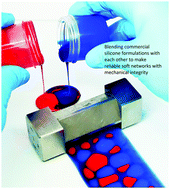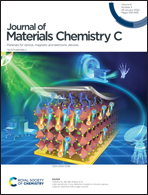Mapping the mechanical and electrical properties of commercial silicone elastomer formulations for stretchable transducers†
Abstract
Elastomers for fabricating soft and stretchable transducers primarily require high elongation at break, high dielectric permittivity, high breakdown strength and low leakage current. Commercial silicone elastomer formulations often do not encompass all of the properties necessary to function effectively as stretchable transducers, but they are nevertheless used out of familiarity. On a research level, Sylgard 184, Sylgard 186, Ecoflex 00-10, Ecoflex 00-30 and Ecoflex 00-50 are widely used for fabricating stretchable devices. We blend these commercial silicones with each other in various proportions, to make the blends most suitable for fabricating specific types of transducers. Furthermore, the properties of these blends, such as ultimate stress and strain, Young's modulus, dielectric permittivity, breakdown strength, viscosity, leakage current and optical transmittance, are investigated and mapped to identify those exhibiting the best-suited properties for fabricating soft and stretchable transducers. The elastomers obtained using the blending methods illustrated herein could act as a starting point for conceptualizing the feasibility of a product on a research level.

- This article is part of the themed collection: 2020 Journal of Materials Chemistry C most popular articles


 Please wait while we load your content...
Please wait while we load your content...